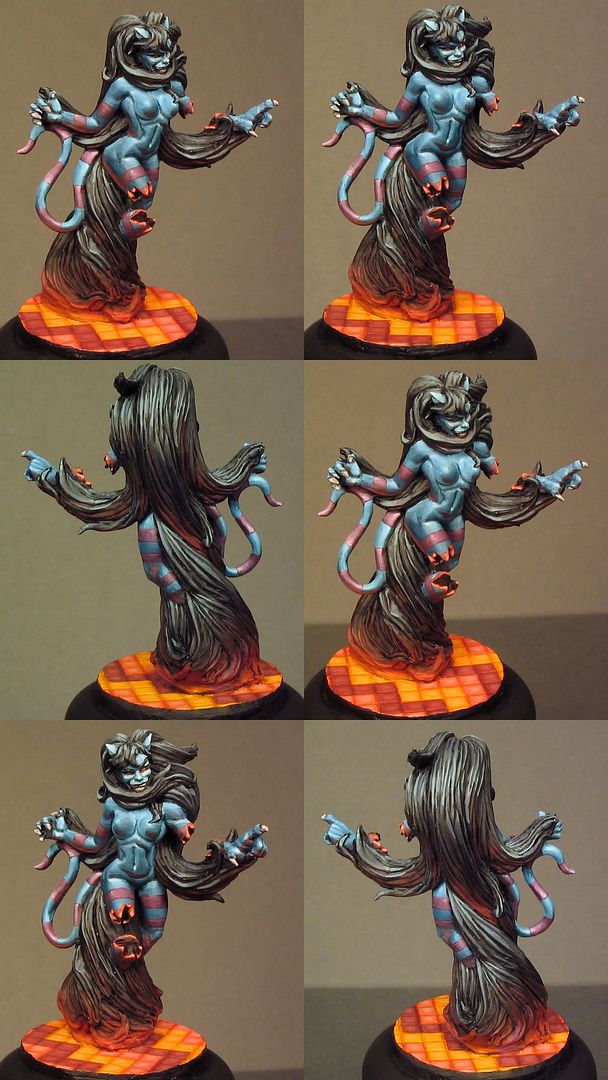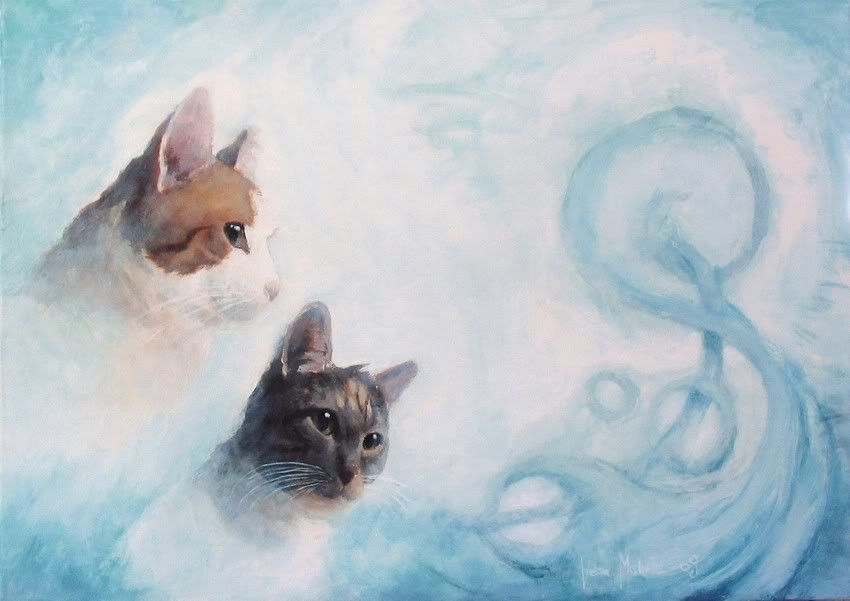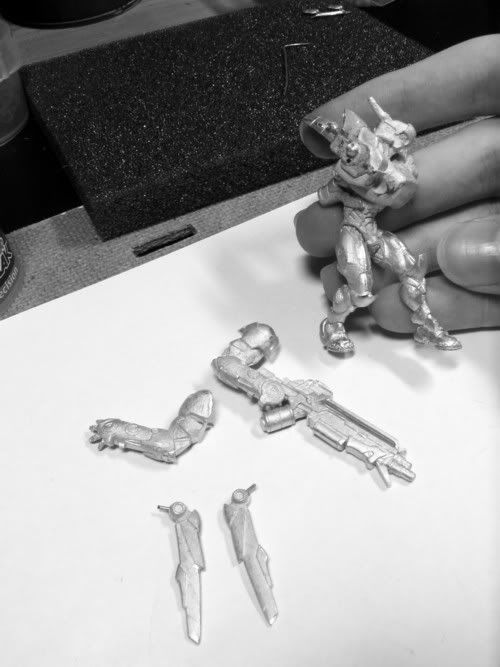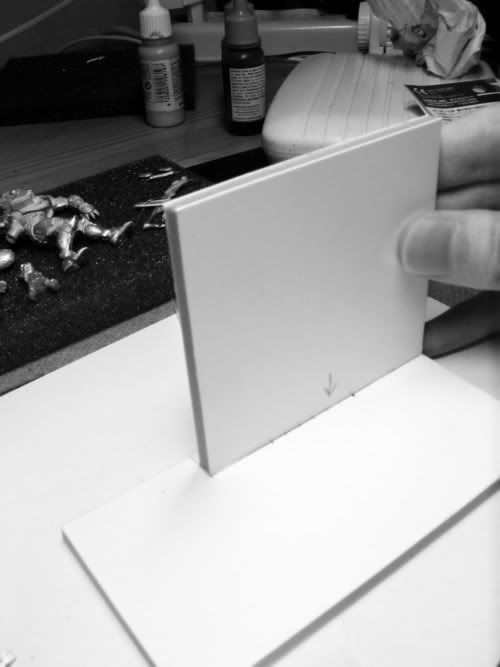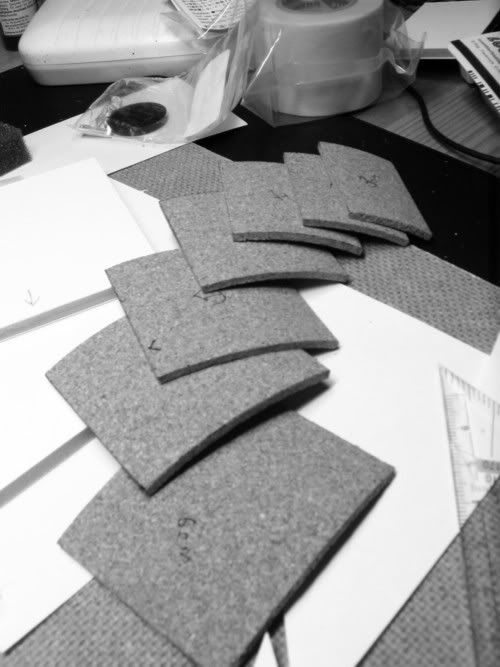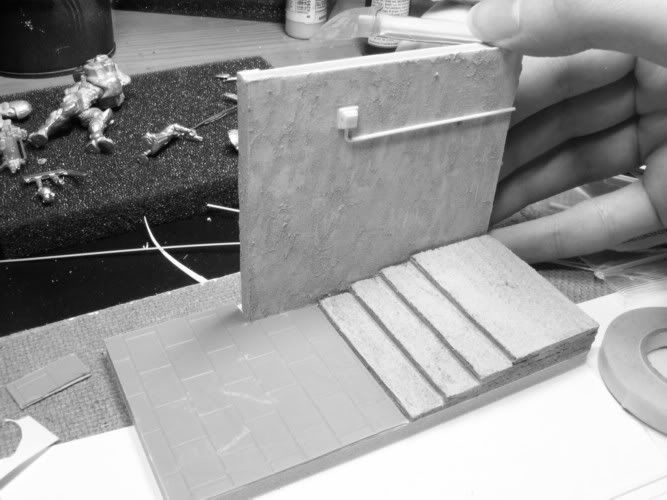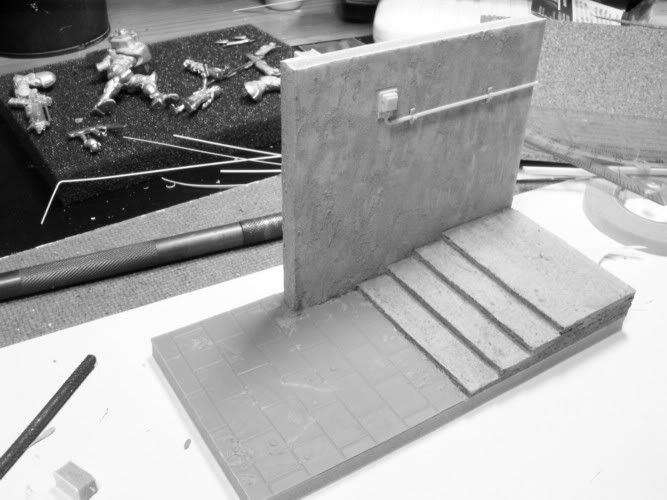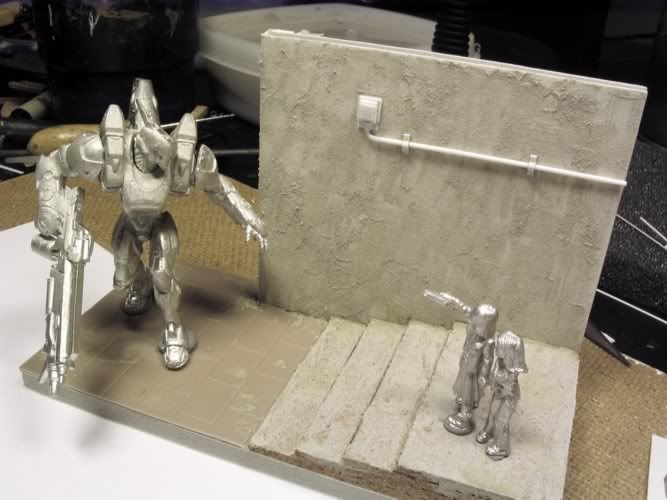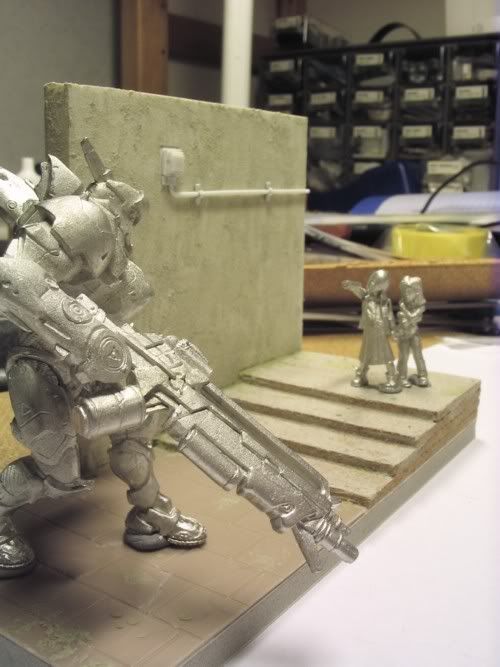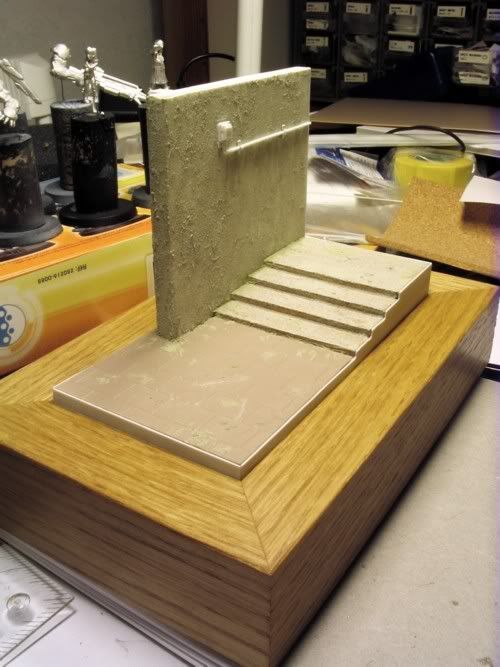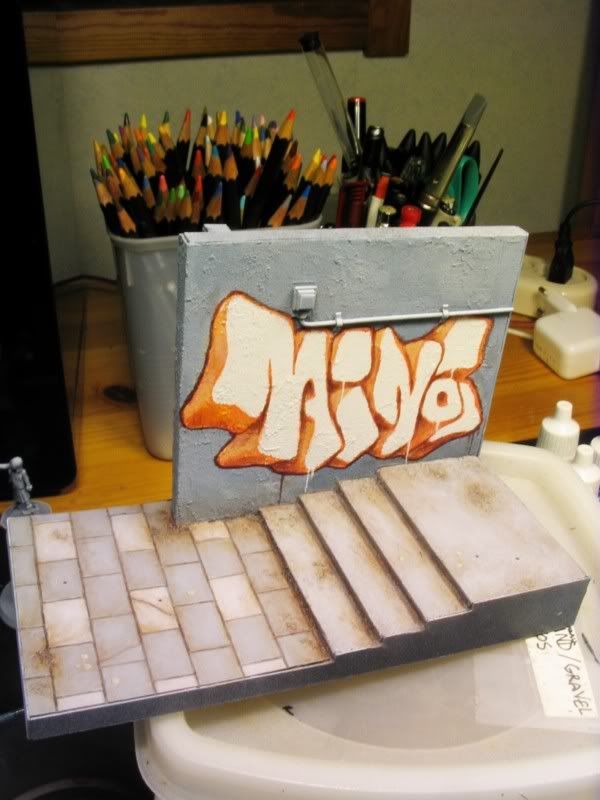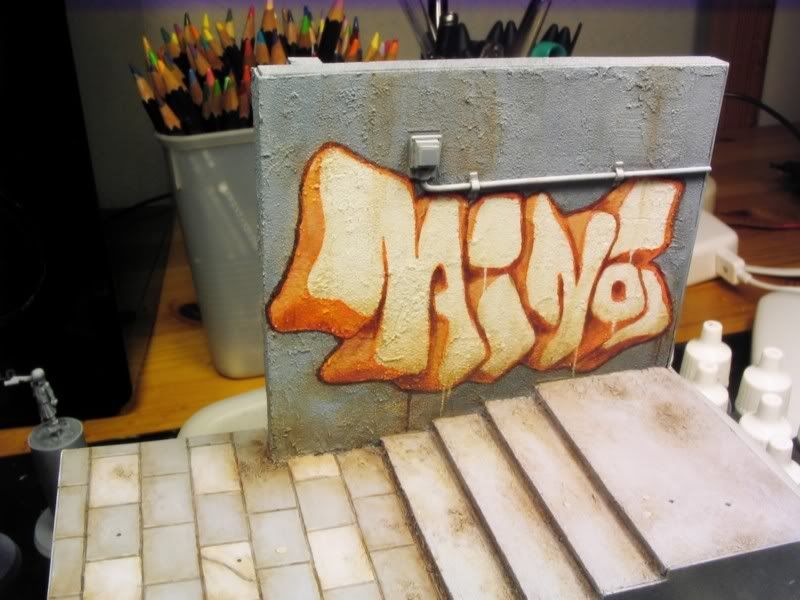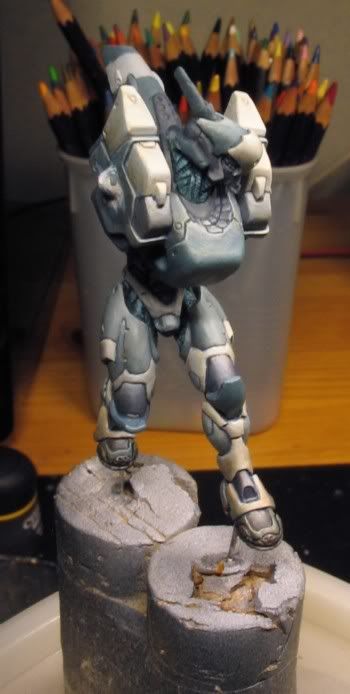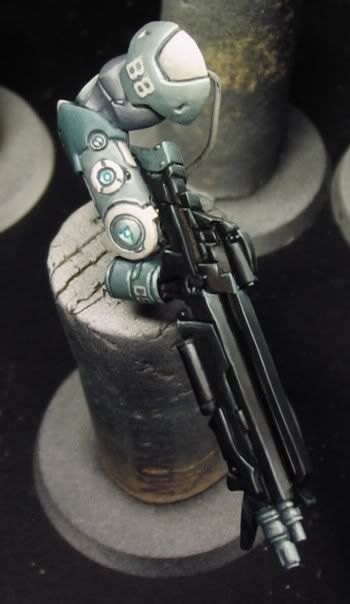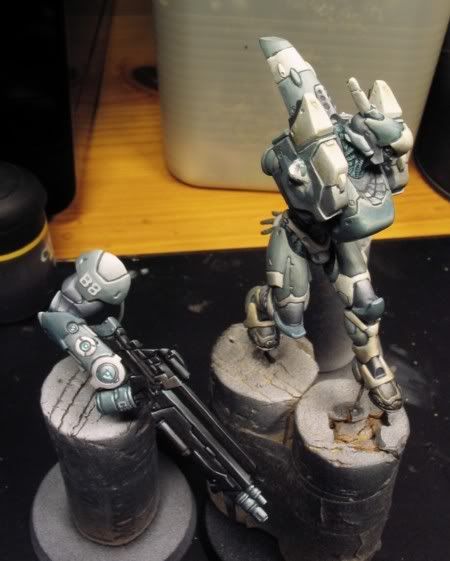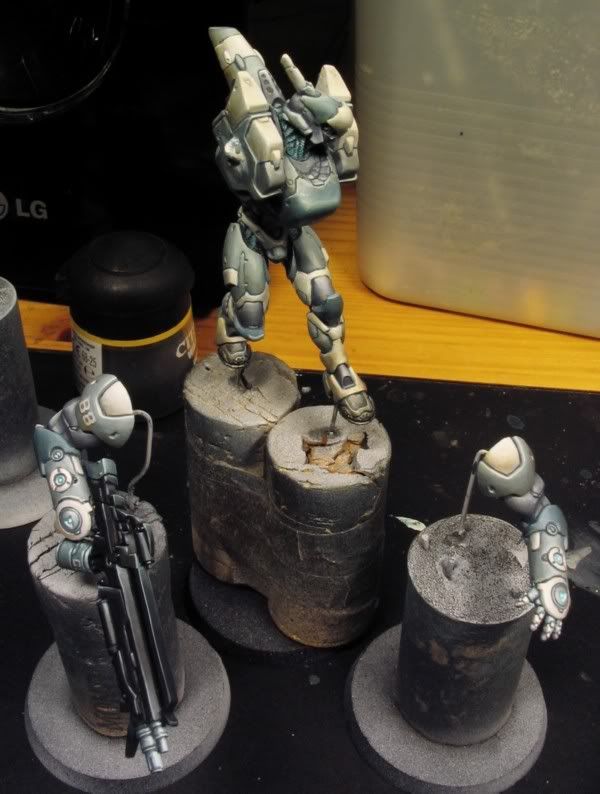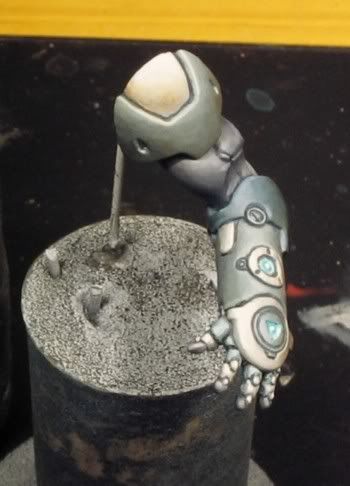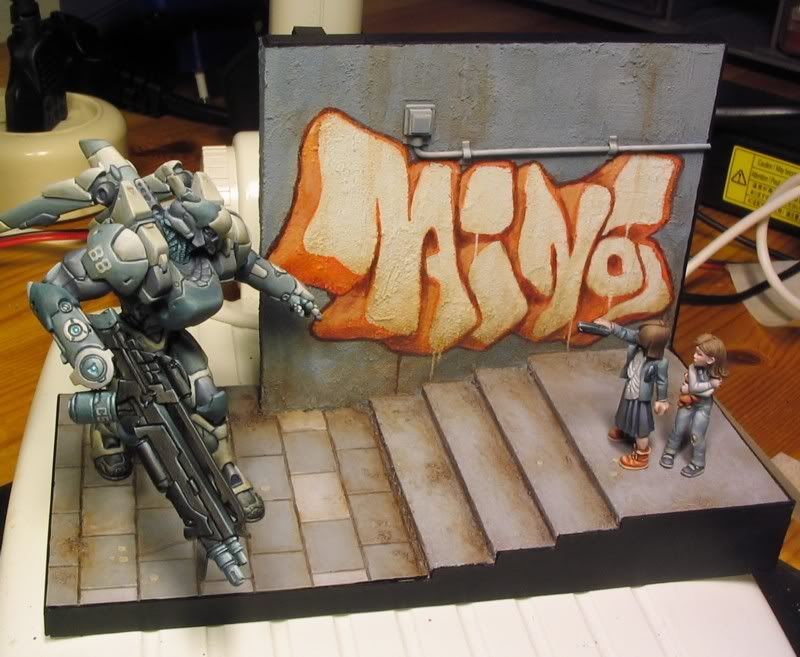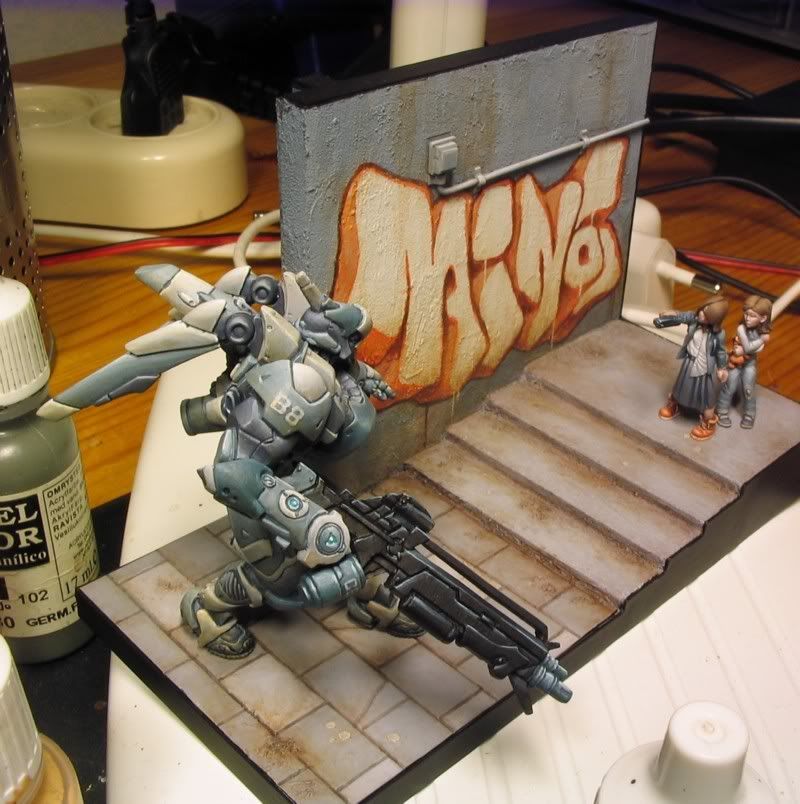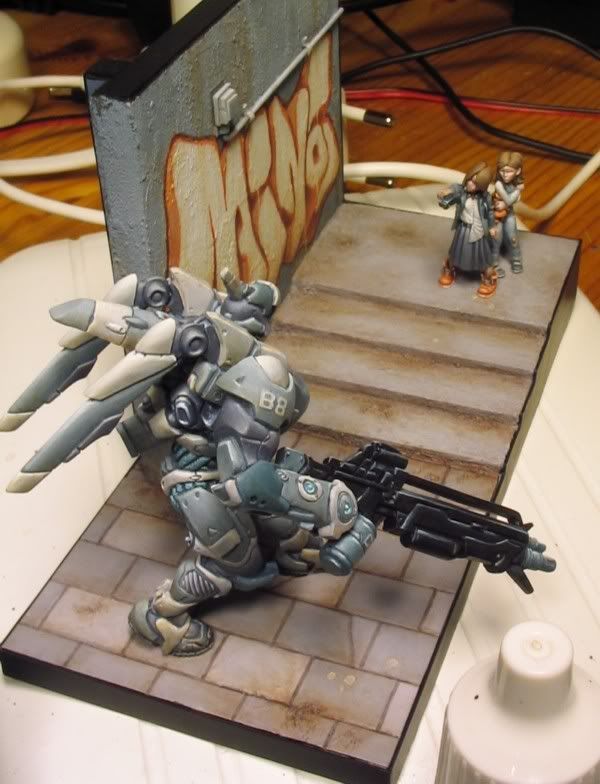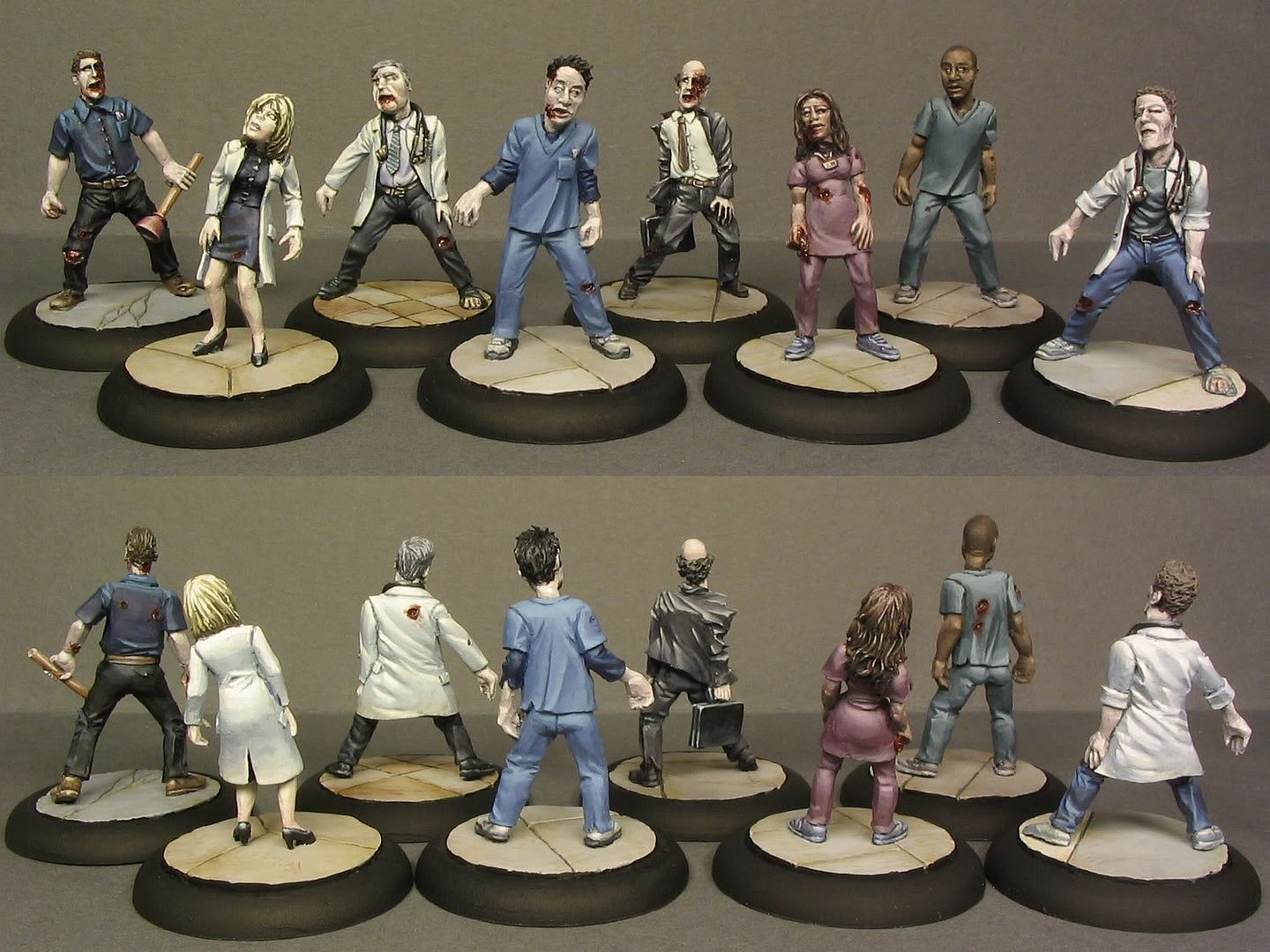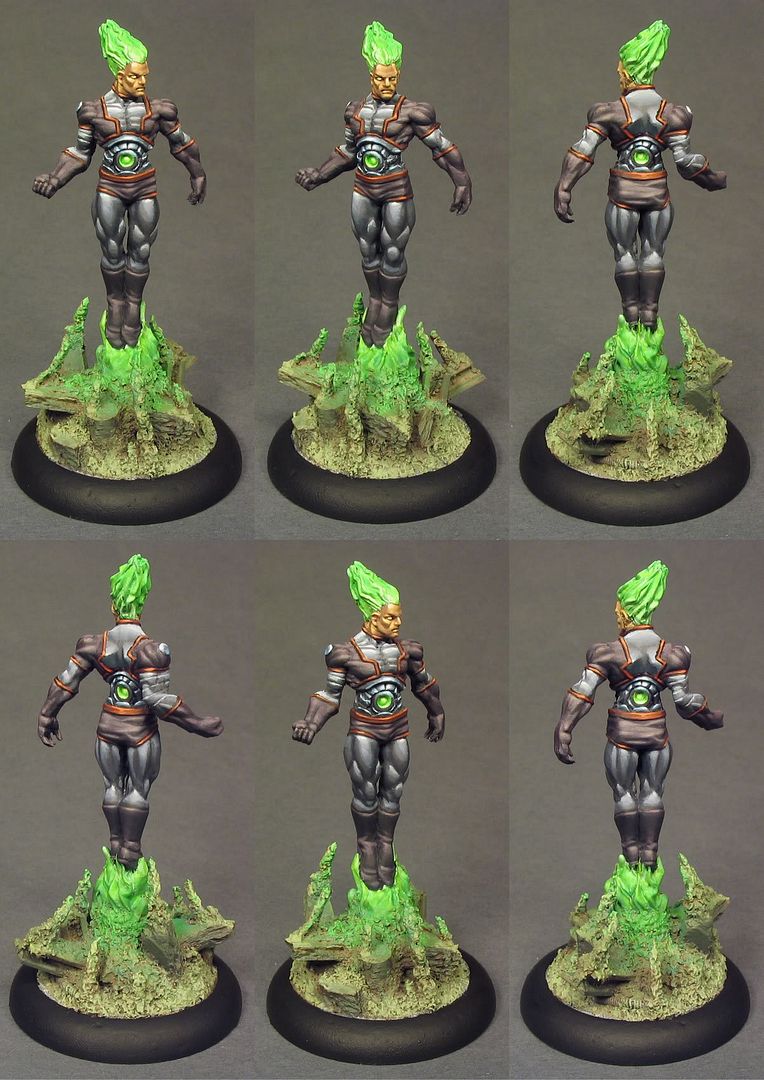I have just finished a big commssion project and it's time for
An Epic blog post (in my very own scale that is).

I started this project in the start of september and since then it has progressed in varying speeds. I've written before about painting the dragon when it was still in wip stage, the article can be found
here. Also the Tsar Boris of Kislev on Bear and Empire Fire Wizard (both from Citadel) are part of the same commission. All these characters look very personal when compared to each other and with painting I wanted emphasize this individuality to truly bring out the core essence of the these sculpts. Of course this is just my own interperation but I hope that people enjoy viewing thse colours and shapes composed together.
The bases on Boris and the wizard I have sculpted from Milliput. I'm fairly pleased about how they turned out knowing how hard sculpting good looking rocks can be. I made the core structure of the rocks by glueing rough pieces of 5-3mm thick corkboard to the base. Then I just slapped on first "coat" of Milliput to cover all the cork at the same time I stroke some rough shapes of the boulders with sculpting tool (with the blade type head). I think I mixed some Green stuff with the Milliput to prevent it from detaching from the cork surface so easily when sculpting because, while the cork is good material to bulk up stuff, some sculpting materials don't stick too well to it. It's not really an issue and once the putty starts to set it gets pretty unnoticeable.
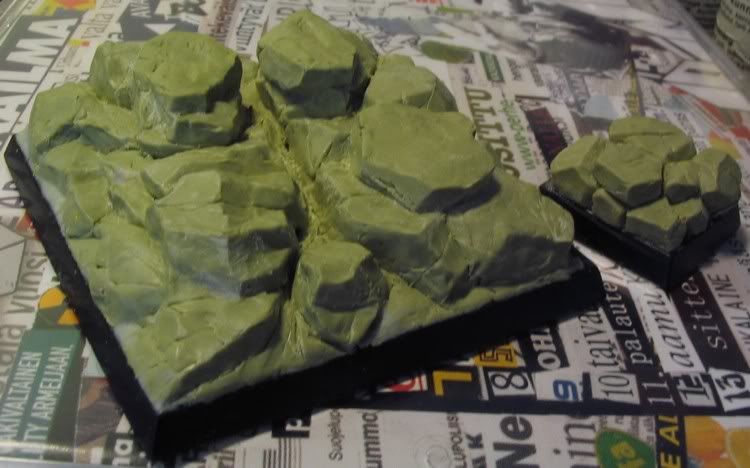
Here are pic of the sculpted bases in WIP stage. I sharpened some rocks after the putty had cured by scraping and filing the edges. Then I covered the edges of the base with magic sculp. I had already assembled the bear to see how the paws will be placed. You may notice the lightly pressed stamps of the bear paws on the highest rocks. The front left foot of the bear already has a rock under it as a part of the original sculpt and I tried to pay attention to get the point of connection look as unobtrusive as I could. Partly because of this I had to connect the base and model before painting.
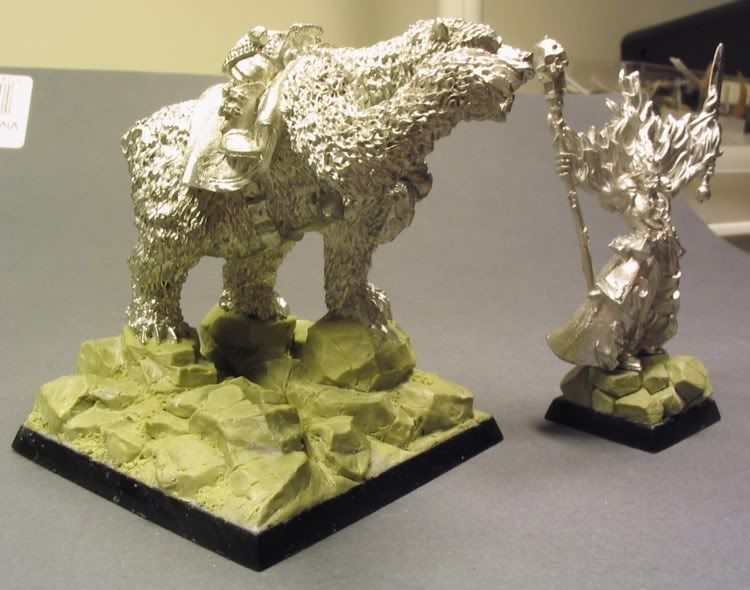
When I had the bear pinned and attached to the base I tried to sculpt seamless connection beetween the model and the base. In this stage I also sculpted some moss around the rocks it's actually placed more like some sand or gravel but still should fit the purpose. I also attached the wizard to it's base because the object source lightning from flames would affect the painting stage and it would not have been of any use to keep them separate.
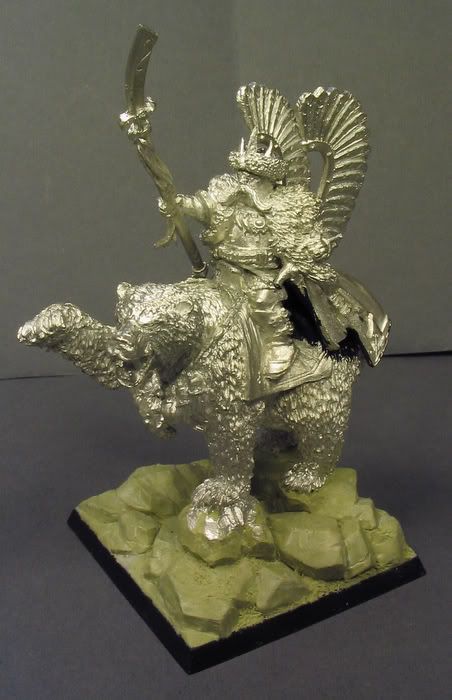
Ok, not much more to add. Finally I ended up with the whole Boris assembled before going to painting stage. I didn't want to paint the upper body separately because it needed some serious gap filling and I just undercoated the hidden area below the mantle with brush before attaching the parts. I only left the shield to be painted separately.

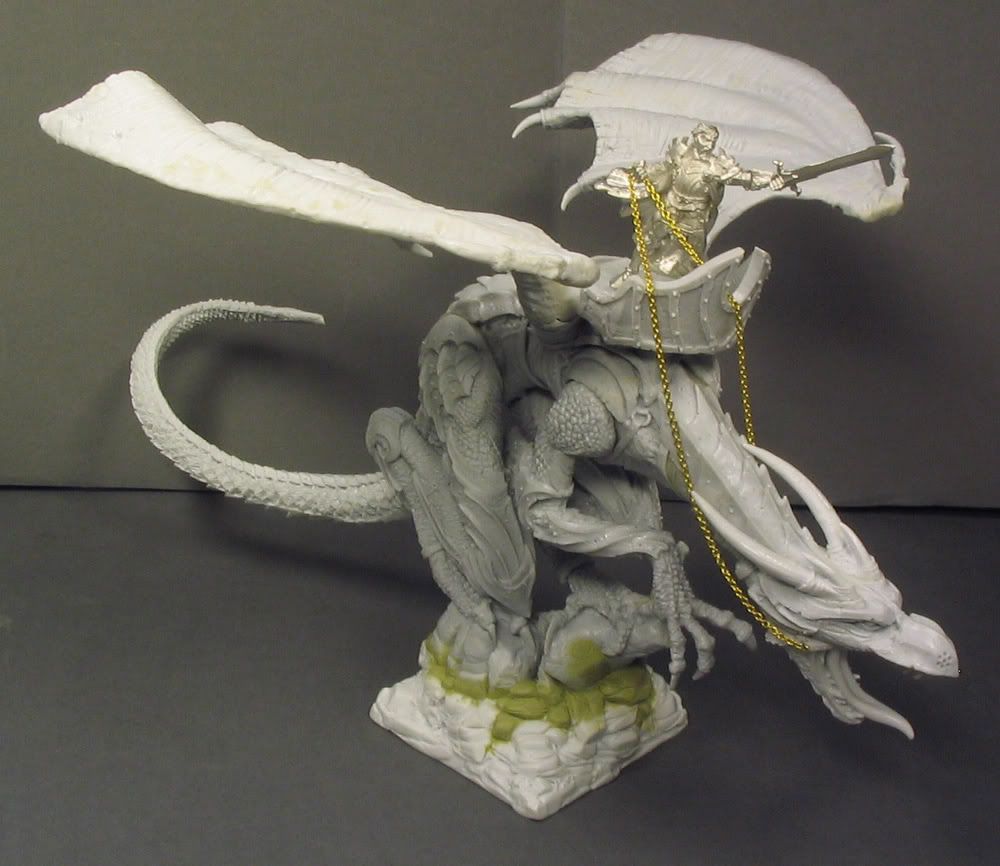
It always takes me forever to assemble and prepare minis like this. All that pinning and airbubble filling takes some serious patience (which I to often lack when preparing minis) so it took me some time. Fortunately I had build this mini once before and I am sure the experience helped me a lot this time. The arms were the only part I would attach after the painting. The wings and the rider are detachable and also painted separately. Wings have the magnets and the rider is attached with two pins (the chain is hanging from small hooks I attached to the dragon.
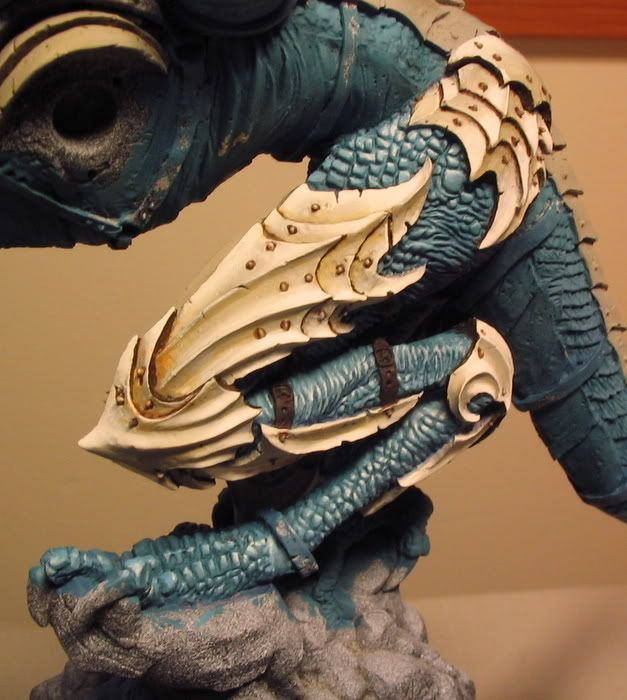
Then I primed the models black and then I dusted lightly some white to give the final painted colours a better reflection capacity than the plain black would allow. It's also easier to see the details and direction of light. The pic shows how the painting started. It's the colour test. I had already basecoated all the skin and armour areas before I took this pic. This is pretty much I advance; I first divide the skin areas to zones and I paint one zone at a time. Then I do the same for the armour etc. I normally paint the glazes when all the zones are layered but in the pic the leg has some glazes because I tested the colour theme to this zone.
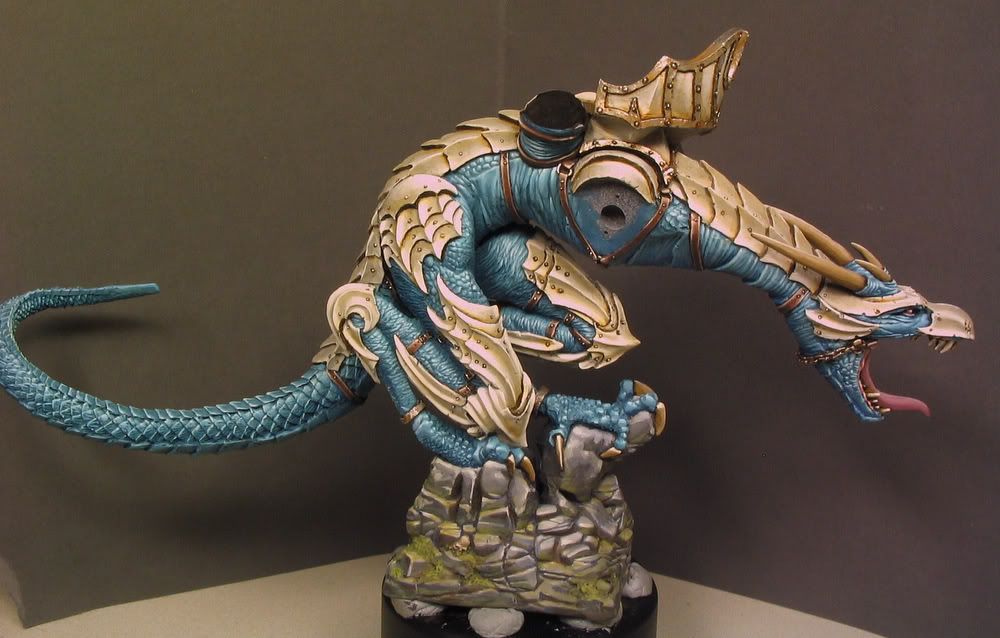
Ok, this has been seen already. I wish I had more work in progress pics I think I often get too enchanted when I paint. The light look quite otherwordly because the camera started to live it's own life once again (you should see what it does sometimes). Maybe I should tell about the black thing that can be seen in the bottom of the pic. It's a cap of a spray bottle (surprise) it's sturdier than the ones GW sprays have and I use it to hold big miniatures. Enough blu-tac and there's no fear about the mini falling down. I rotate the minis a lot in every direction when I paint to find the optimal angles for brush strokes and it's very important that the figure is easy to handle and a good grasp prevents well any cramping and things like that. Even the Boris figure which is very hefty remained stablely attached through the whole painting stage with about eight blobs of blu-tac.
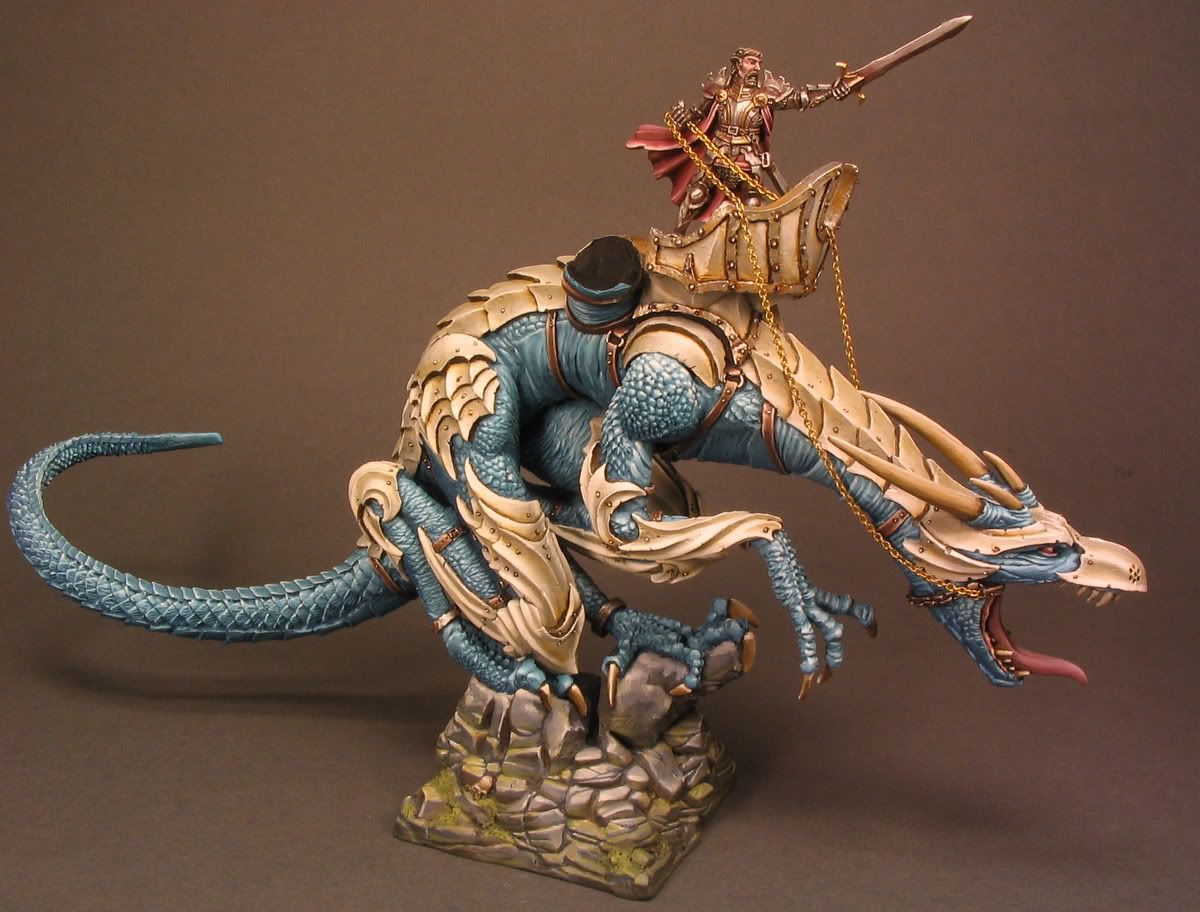
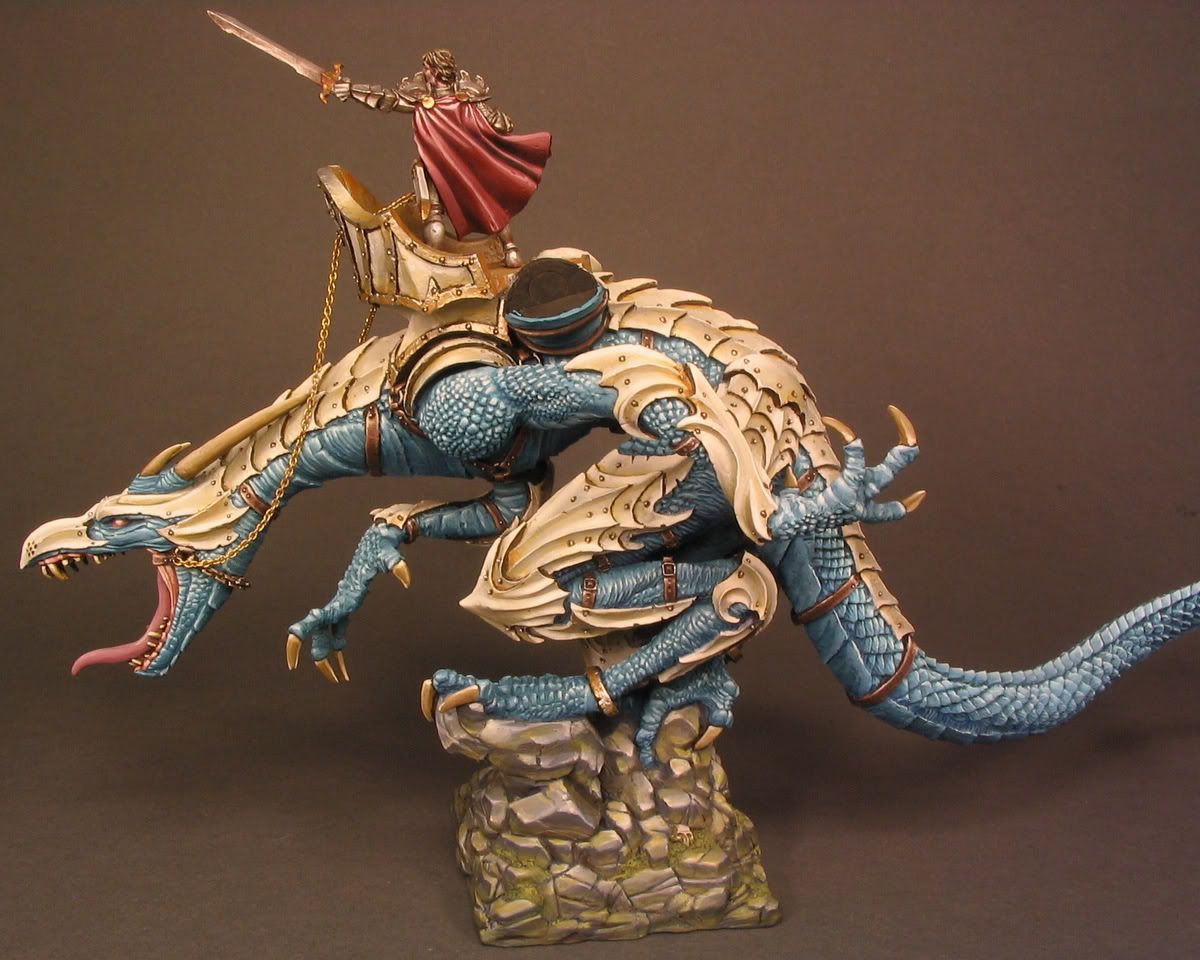
Here I have the arms painted and attached. Also the rider which is again the Götz figure from Hell Dorado range is here painted and placed in his hood (the right word?). These pics show the armour offwhites and colours better. I think the rosey red on the Gotz's cape fits the dragon colours very well and makes the rider stand out more but not too much.


These are the final pics I took of the dragon. When I first time tried to paint those wings a year ago I had to repaint them few times because I were not happy with the result. This time painting those wrinkles and light scale were not that challenging and I think I mostly managed to give the wings the gleaming shiny effect of the reptilian skin to make them look interesting without strong tonal changes that wouldn't probably have fitted with the overall look. After layering the wrinkles I painted thin glazes of Prussian blue (mixed with some Royal purple) to shade the darker reas of the skin. If you use strictly zenithal style of highlighting on a large almost horizontal surfaces like those wings the result would possibly look a bit plain if you don't use stronger tonal changes than I did. I tried to solve this problem by giving both wings a visible secondary light source which creates the shadows on the other side of the wing curves. I also painted them as mirrors of each other because it would have looked very odd to have a shadow along the outer edge of the other wing.

It's always hard to paint convincing flame effect. Normally you would just highlight the parts that the light naturally picks and leave the recesses shadowed. With the flames you need to paint the core bright and at the same time take care that those bright areas still reflect the natural light. I think the sculpt heavily impacts on the approach you have to take to painting artificial light sources in three dimensional form.
I first undercoated the flames evenly with the most dominant colour which is hot orange-red. I used VMC Vermillion, Bright Orange and Cadmium Umber Red to a good tone. Then I started to bouild highlight partly towards the core and partly where the real light hits on the mini. I am glad this mini's flames have those roundly sculpted recesses which reflect light well without being rised (this not very good thing in case you want deep shadows in the recesses). So I first painted towards the light first from Vermillion to Bright orange, then to Ice Yellow through Deep Yellow and I were done. I had a big LP cover to look some reference (
this one) and I noted it's not necessary at all to paint the brightest spots with pure white so I didn't make the cores of the flames no lighter than Ice yellow and I think it works quite well. Then I just layered the tips of the flames through Cadm. umber red to almost pure black peaks. To emphasize the warm flames and the source lightning effect I made the other areas cold and dark almost nightly looking. The icy blue lights around the belt buckle have no actual light source but I thought it would look quite cool.

A week ago I saw Werner Herzog's document Grizzly Man about Timothy Treadwell and now this mini just makes me a bit sad, it just looked funny/silly before... Well, nevertheless I'm very happy about how the colours and painting turned out on this one. The blue and red tones are based in same colours I used on the dragon just mixed in quite different ratios to give the model a very distinct, subtle atmosphere.
I started by undercoating the bear fur and painting the base. I used the same method as I did with the dragon. First I layered the rocks in grey scale with no or little tonal changes beetween areas and then painted the green and brown tones with thin and transparent glazes to birng some life to the grey. I very much like the glazing tecnique as it reminds me of watercolour painting but I mostly enjoy toying with glazes only when I paint bases and it's better not to have too clean finish.
I had painted some layers to the bear fur when I undercoated almost all other areas of the model with black brown. I've noticed that this is a quite suitable undercoat before painting the basecoats it also provides a good base for the darklining when you cleanly block the separate areas with the basic colours and leave fine thin lines in the recesses. I've found the Black brown to be best choice for close to nature and organic subjects for sci-fi models etc. I often replace it with Dark Sea Blue but I don't use much black on models these days, mainly when I need to paint black details like the fethers and halberd shaft on this model.
The gold parts of this model I have first painted with Mithril Silver to provide the gold paint a better coverage. The I painted couple thin layers of VMC Brass to make an even basecoat for the bling. I don't know if some people actually can recognize any major differences beetween these metallic paints especially when they are glazed and hgilighted. After having painted the covering basecoats I glazed these areas with mixes of Brown glaze and Cadm. umber red. Then I took the brass out again and painted first highlight layer with it. After this I mixed it with some Mithril silver to piant the brighter highlights. I don't go to pure Mithril Silver because the "gold" parts can blend too much with the metallic silver parts.
Thanks for everyone who took the time to go through these random musings I hope some of it makes sense. Soundtrack for it was provided by
Paavoharju.
